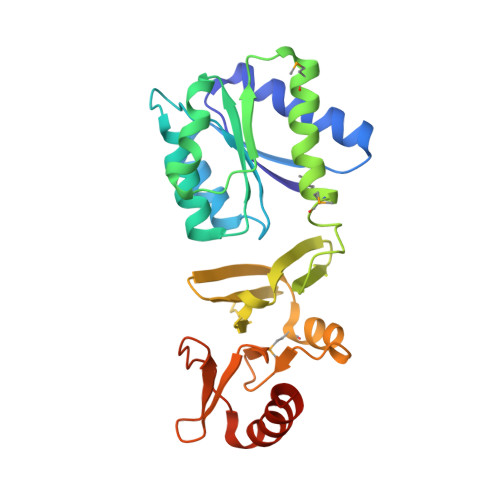Structural Insights Into the Dimerization of the Response Regulator Come from Streptococcus Pneumoniae.
Boudes, M., Sanchez, D., Graille, M., Van Tilbeurgh, H., Durand, D., Quevillon-Cheruel, S.(2014) Nucleic Acids Res 42: 5302
- PubMed: 24500202
- DOI: https://doi.org/10.1093/nar/gku110
- Primary Citation of Related Structures:
4CBV, 4ML3, 4MLD - PubMed Abstract:
Natural transformation contributes to the maintenance and to the evolution of the bacterial genomes. In Streptococcus pneumoniae, this function is reached by achieving the competence state, which is under the control of the ComD-ComE two-component system. We present the crystal and solution structures of ComE. We mimicked the active and non-active states by using the phosphorylated mimetic ComE(D58E) and the unphosphorylatable ComE(D58A) mutants. In the crystal, full-length ComE(D58A) dimerizes through its canonical REC receiver domain but with an atypical mode, which is also adopted by the isolated REC(D58A) and REC(D58E). The LytTR domain adopts a tandem arrangement consistent with the two direct repeats of its promoters. However ComE(D58A) is monomeric in solution, as seen by SAXS, by contrast to ComE(D58E) that dimerizes. For both, a relative mobility between the two domains is assumed. Based on these results we propose two possible ways for activation of ComE by phosphorylation.
- Institut de Biochimie et de Biophysique Moléculaire et Cellulaire, Université de Paris-Sud XI, UMR8619, Bât 430, 91405 Orsay, France and Centre National de la Recherche Scientifique, Orsay, 91405, France.
Organizational Affiliation:

















